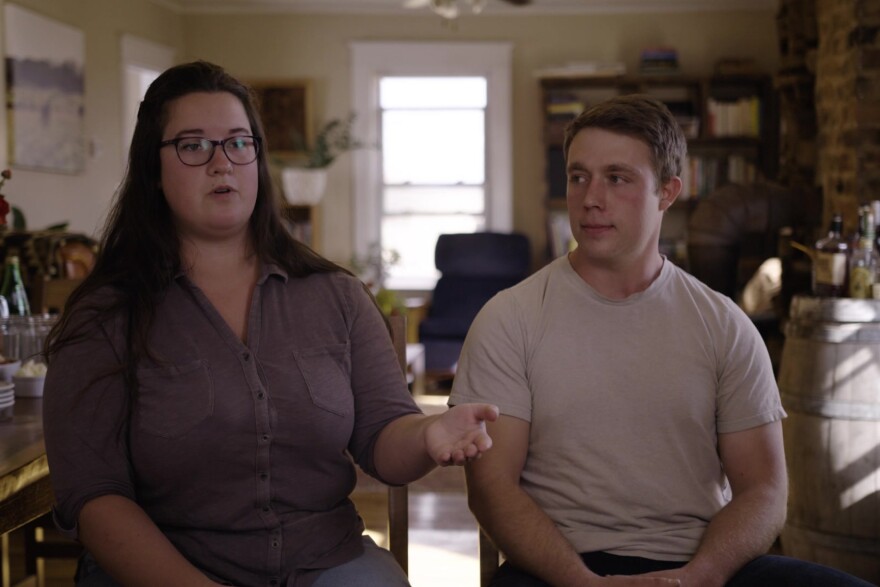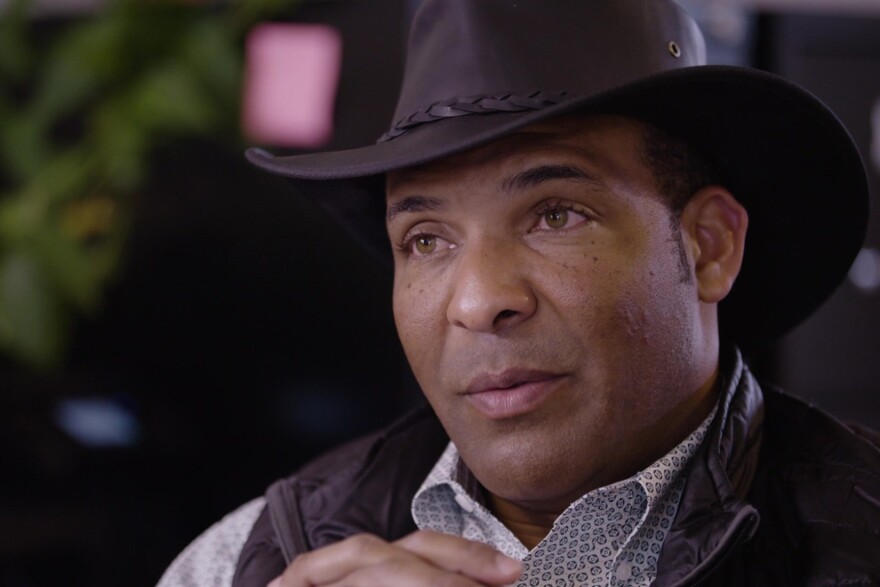Shane Murrow and Jessie Linton, co-owners of Meadow Wood Farm in Swoope, are determined to farm on their own terms. “I’m a Dust Bowl descendant. My family survived that,” said Murrow. But he and Linton represent a new generation — raising a diverse mix of livestock, hewing to sustainable practices and maintaining a small-scale operation.
Still, like other small farmers, they have many barriers to overcome. Everything from expensive equipment and market volatility to government policies and systemic racism combine to put small farmers in a constant bind. It is a struggle to survive, and for that to happen, they need innovative solutions.
“We’re at this crossroads,” said Linton. “It’s an antiquated system that is just at a tipping point.”

Agriculture is a difficult industry to break into, especially for young farmers just starting out. The upfront investment can be daunting. Farms can cost $1 million or more, and that’s beyond what many aspiring farmers can come up with.
“The ideal farming setup would be if you could inherit the farm. That’s possible for some people — it’s impossible for others,” said Michael Smiley, owner of South River Land & Cattle Company in Waynesboro.
Equipment is pricey too, he added: “If you go buy a brand-new tractor — and I’m not talking anything with bells and whistles, I’m just talking [about] a good working-class tractor — it’s $65,000 to $75,000. There’s nothing in this industry that is chump change.”
Modern technology is a blessing and curse. In the past, many farmers would learn basic mechanical skills to repair their equipment. But now, technicians have to come out with a computer to repair modern tractors. That cost cuts into profits.
Government policy also has been working against small farmers since the 1970s, when U.S. Secretary of Agriculture Earl Butz began to push for the industrialization of agriculture. Butz made policy shifts that coincided with the rise of large agribusiness corporations and the declining financial stability of the small family farm.
“The industry really rewards the big corporations,” said P.J. Haynie, owner of Haynie Farm in Reedville. “The wholesalers and retailers make 80% of the money on farming, yet the farmer has 100% of the risk.”
Black farmers like Haynie face a unique set of issues atop the challenges all farmers confront. During the Jim Crow era, inequities were built into the system. And, during the past century, the percentage of Black farm operators in the U.S. dropped from its high point of 14% down to 1%.
“That’s 50,000 total Black farmers in the U.S., and we’re facing extinction,” said John Boyd Jr., owner of Boyd Farms in Mecklenburg County and founder of the National Black Farmers Association.
Inequities in lending practices have favored white farmers over Black farmers. “The USDA reports showed on average it took 30 days to approve a white farmer’s loan and 120 days to approve a black farmer’s loan,” said Haynie. That gives an advantage to the white farmer, who can plant during the optimal time in the spring and realize an optimal yield on his crops by planting on time.
“It didn’t just happen to one, it was a domino effect across the country,” he added.

Because they work relatively small acreages, these farmers recognize the need to protect and preserve the soil ecology that supports their crops. Part of the solution is understanding the natural cycles of grazing land and managing it carefully.
“We rotationally graze [in a way] that mimics these natural systems,” said Murrow. That means livestock are frequently moved from pasture to pasture, which keeps the grass healthy and stimulates new growth.
Another challenge is that farmers are more isolated today than in the past, when agricultural communities were better connected and people helped each other out, said Murrow. In fact, compared to the general population, farmers and ranchers are more than twice as likely to die by suicide in the U.S., according to the Centers for Disease Control and Prevention.
It's a crisis that’s beginning to get attention. In 2021, Congress appropriated more than $28 million for farm and ranch stress assistance programs. It would help a lot, said Meadow Wood Farm’s Linton, if farmers would simply start talking to each other more often.
Despite these challenges, many farmers still believe in the viability of small farms.
“It’s much better for us to be focused on a small amount of land and doing that well than being forced by agricultural legislation and the economy to grow [on] as much land as possible,” said Linton.
That note of optimism is consistent among many farmers — and reiterated by Boyd.
“If you invest in rural America and small-scale farms, our country will quickly turn around,” he said. “We have to live up to what we are known for — [being] the greatest country in the world.”
This article is based on the Farming episode from the new VPM docu-series “Life in the Heart Land.” The series gets to the heart of those creating unique solutions to rural America’s toughest challenges.
Watch Thursdays at 8:30 on VPM PBS or anytime on the PBS App.
Visit vpm.org/heartland to learn more.







